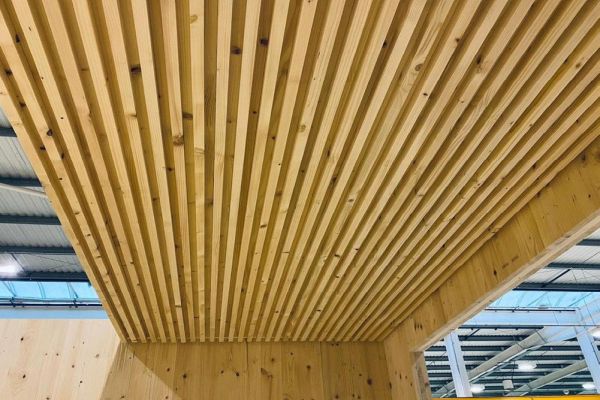A new initiative is shining a spotlight on the benefits of using Scottish timber in construction projects across the UK – with benefits including lower reliance on imports.
It is hoped that the new demonstrator project could also lead to a major boost for Scotland’s economy.
A consortium of partners – comprising Construction Scotland Innovation Centre (CSIC), Edinburgh Napier University’s Centre for Offsite Construction and Innovative Structures (COCIS), Scottish Forestry, Confederation of Forest Industries (Confor), and SNRG – has secured funding from Innovate UK’s Sustainable Innovation Fund to prove the business case for using Scottish timber to create the structural elements of buildings.
The initiative will manufacture the first Scottish-sourced cross laminated timber (CLT) and nail laminated timber (NLT) housing unit – including wall, roof, and floor – using the UK’s only vacuum press at CSIC’s 35,000-square-foot innovation factory in Hamilton. The aim is to ultimately lead to the mainstream use of home-grown timber in Scotland and the rest of the UK construction, as well as the development of the country’s first engineered timber manufacturing plant.
Set to complete by the end of 2020, the CLT and NLT superstructure will be showcased at next year’s COP26 United Nations conference on climate change, set to take place in Glasgow in November.
Sam Hart, innovation manager at CSIC, said:
The project is an important milestone in the move towards more mainstream use of home-grown timber in the UK’s construction sector, the majority of which is grown in Scotland.
"Greater use of our natural and renewable resources will deliver a range of environmental, cost, and economic benefits for Scotland and the wider UK. COP26 is a once-in-a-generation opportunity to showcase what can be achieved.
Using more home-grown timber is expected to significantly lower costs for the construction industry – initial figures suggest a potential reduction of as much as 10 per cent compared to imported CLT – cut carbon emissions, and open new markets to the UK-based timber sector.
Those behind the new initiative say that around 85 per cent of all new homes in Scotland are built using timber, and in 2018, the UK was the world’s second-largest net importer of forest products – including timber – behind only China.
Professor Robert Hairstans, head of the COCIS, said:
Scotland has the renewable resource , internationally recognised expertise and technical capabilities necessary to be at the forefront of a new approach to delivering a sustainable built environment in response to the climate crisis.



